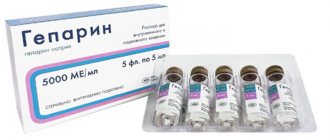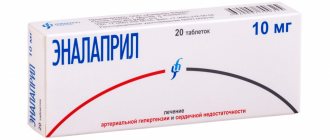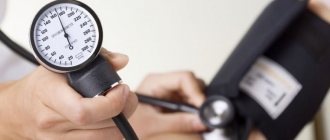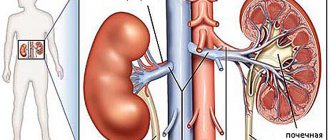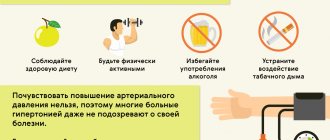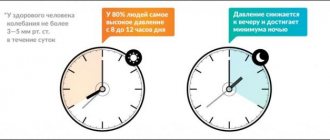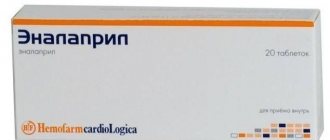New generation antihypertensive drugs include sartana drugs. These are highly effective medications for lowering blood pressure, which are prescribed by the attending physician according to indications. They cause a minimum of adverse reactions and are well tolerated by patients if the prescribed treatment regimen is strictly followed. This is a young pharmacological group of drugs that has become an alternative to long-known angiotensin-converting enzyme inhibitors. Before taking it, you need to read the instructions for use, understand the principle of action, analyze which drugs they are compatible with and which they cannot be taken together with.
Pharmacological effects
The renin-angiotensin system is responsible for blood flow and blood pressure. The functions of this system are to regulate vascular tone, the interaction of the liver, kidneys, adrenal glands, and the volume of fluid released. The enzyme angiotensin 2 constricts blood vessels, which increases blood pressure.
The group of sartans protects cells from the action of angiotensin 2. The drugs block the production of the enzyme, thereby protecting the walls of blood vessels. The vessels remain dilated, and the pressure does not rise.
Sartans not only have antihypertensive properties, but are also effectively used to treat renal disorders and abnormalities of the heart.
Sartans are one of the groups of drugs for the treatment of hypertension
The therapeutic effects of sartan drugs are reflected in the table.
| Action | Result |
| Cardioprotective, vasoprotective | the load on the myocardium is reduced; the rate of increase in the mass of the left ventricular myocardium slows down; the risk of developing atrial fibrillation is reduced; normalizes heart function in case of insufficiency |
| Neuroprotective | the risk of cerebrovascular accident is reduced; the risk of cognitive impairment in hypertensive patients decreases |
| Renoprotective | tissue swelling decreases; potassium content increases; the risk of protein appearing in urine is reduced; the degree of development of kidney failure is reduced |
| Metabolic | sensitivity to insulin increases; blood sugar concentration decreases; the risk of developing atherosclerotic lesions is reduced; the likelihood of diabetes in hypertensive patients decreases; the level of triglycerides, cholesterol, and low-density lipoproteins decreases; the level of high-density lipoproteins increases. |
Scheme describing the mechanism of action of sartans
Pharmacodynamics of a group of drugs
The increase in blood pressure occurs due to the release of angiotensin 2 (AT 2). When it acts on the receptors, the vascular wall of the arteries contracts, causing a narrowing of the lumen. This leads to an increase in blood pressure. Taking angiotensin receptor blockers (ARBs) interferes with this action.
The effect of the drug occurs due to blocking of receptors, which is why AT 2 does not act.
There are other therapeutic effects aimed at improving the patient's well-being. They are taken into account when prescribing the type of medicine. The data is presented in the table.
| Effect on the body | Action |
| Protection of blood vessels and heart | Reducing the load on the myocardium, which leads to the elimination of ventricular hypertrophy. Reducing the risk of sudden tachycardia, atrial fibrillation |
| Brain protection | Improving mental activity and concentration. Eliminate headaches, reduce the risk of stroke |
| Protection of renal tissue, glomerular apparatus | Normalization of diuresis, elimination of edema, microalbuminuria. Reducing cell damage, which inhibits kidney failure. Normalization of mineral metabolism by eliminating the excretion of minerals and protein in the urine |
| Normalization of metabolism | Eliminating the accumulation of cholesterol and other lipoproteins in blood vessels, preventing atherosclerosis. Hypoglycemia, stabilization of diabetes mellitus, increased tissue sensitivity to insulin |
Favorable pharmacodynamic effects are observed in people who use sartans for a long time. A single use of the product only stabilizes the pressure. But this is a temporary effect.
You can get rid of mature worms, their larvae and eggs using broad-spectrum antiparasitic agents. And the use of gastro- and hepatoprotectors, vitamins and eubiotics will help eliminate the damage they cause. Read more in the article: “medicine for worms for an adult.”
List of latest generation drugs
There are two generations of sartans for the treatment of hypertension: the first and the last. First generation sartana tablets for blood pressure are Valsartan, Candesartan, Losartan, Olmesartan, Eprosartan, Irbesartan. They block the activity of the enzyme angiotensin 2. The latest generation sartans reduce the production of angiotensin 2 and receptors activated by peroxisome proliferators y-type. They are responsible for:
- cellular differentiation;
- lipid and carbohydrate metabolism;
- insulin sensitivity;
- beta oxidation.
The only representative of the latest generation sold in Russia is Telmisartan. The drug effectively lowers blood pressure and has other pharmacological advantages:
- reduces the likelihood of developing atherosclerotic vascular lesions;
- lowers the content of triglycerides and glucose;
- restores hormonal activity of the pancreas;
- normalizes lipid metabolism in diabetics;
- stops inflammatory processes;
- eliminates adverse reactions from taking thiazide diuretics.
Telmisartan is one of the latest generation blood pressure medications
It is impossible to identify the best sartans based on their effect on pressure indicators. They all effectively lower blood pressure levels with a difference of 2 points.
The most popular sartana medications for arterial hypertension are presented in the table.
| Main active ingredient | Drug name |
| Valsartan | Walz; Valsafors; Valsacor; Diovan; Nortivan; Tareg |
| Losartan | Blocktran; Vasotens; Zisakar; Carzartan; Lozap; Lorista; Renicard |
| Irbesartan | Aprovel; Ibertan; Firmasta |
| Candesartan | Angiakand; Atakand; Hyposart; Candecor; Xarten; Ordiss |
| Olmesartan | Cardosal |
Popular representatives of sartans
Drug names
Each group of drugs and its representative differ in chemical structure. They have indications for use, contraindications, and side effects. Therefore, before prescribing a medication, a medical history is first collected and instrumental and laboratory examinations are performed. The following groups and related drugs are distinguished.
- Biphenyl tetrazole derivatives. Valsartan, Irbesartan, Losartan, Candesartan.
- Non-biphenyl tetrazole derivatives. Eprosartan or Teveten.
- Biphenyl non-tetrazole compounds. Telmisartan, olmesartan.
Different chemical compounds of drugs are similar in their mechanism of action. That is, the groups have a similar effect on the adrenal hormone. Based on their effect on AT 2, the following drugs are distinguished:
- competitive - block receptors, displacing the hormonal substance from the complex (Eprosartan, Losartan);
- non-competitive - do not displace the hormonal substance, so the effect on the body lasts for a long time (Telmisartan, Valsartan, Candesartan).
In terms of its effect on receptors and vascular tissue, the drug differs from ACE inhibitors. However, the indications for use are identical. Therefore, sartans are often prescribed to patients who have developed resistance to pril (Enalapril).
Effective medications for liver disease are believed to be expensive and very rare. But this is far from reality. It is enough to analyze how the active ingredients used work and what exactly the medicine used affects. Read more in the article: “the best medicine for liver restoration.”
Indications for use
Angiotensin 2 receptor blockers (ARBs) are prescribed to treat hypertension. In combination with other medications, ARBs are prescribed for the treatment of:
- chronic heart failure;
- lesions of the glomerular apparatus and renal parenchyma;
- microalbuminuria;
- left ventricular hypertrophy;
- diabetes;
- insulin resistance syndrome;
- atherosclerotic vascular lesions;
- atrial fibrillation;
- heart attack (using Valsartan).
Arterial hypertension and hypertension
To quickly lower blood pressure, doctors often prescribe angiotensin 2 receptor inhibitors. Sartans for arterial hypertension are especially effective if the patient has concomitant diagnoses:
- increased mass of the left ventricular myocardium;
- chronic heart failure;
- albuminuria;
- diabetes;
- renal failure;
- post-infarction cardiosclerosis.
For hypertension, sartans are prescribed instead of angiotensin-converting enzyme inhibitors if a severe cough occurs.
Blood pressure medications sartans are taken alone or in combination with other antihypertensive drugs. The effectiveness of monotherapy is 10-15% lower than complex therapy. Drugs with a cumulative effect show a pronounced effect in the treatment of hypertension a month after the start of the course.
Sartans are only one group of drugs that should be taken by hypertensive patients every day
Myocardial infarction
After a heart attack, the only drug from the group of angiotensin blockers that can be taken is Valsartan.
The drug reduces the likelihood of death from a heart attack by 25%.
The doctor prescribes Valsartan after myocardial infarction on days 3-10, when the risk of a sharp decrease in blood pressure disappears. The drug is effective for recurrent heart attacks to reduce the likelihood of complications.
Nephroprotective effect
Proteinuria and microalbuminuria are prognostically unfavorable conditions, indicating the progression of kidney damage and the development of chronic renal failure. In patients with nephropathy due to diabetes mellitus, kidney damage due to hypertension and other conditions, a decrease in proteinuria delays the development of adverse outcomes and the need for hemodialysis.
Currently, the nephroprotective effect of ACE inhibitors is considered proven. As for ARBs, there is no clear opinion yet.
There are several randomized clinical trials demonstrating the effect of ARBs in patients with hypertension in combination with diabetic nephropathy. The RENAAL study showed that losartan compared with placebo resulted in a 35% reduction in proteinuria, a 25% reduction in the incidence of serum creatinine more than doubling, and a 28% reduction in the risk of end-stage renal disease. Similar results for another ARB, irbesartan, were obtained in the IDNT and IRMA 2 studies.
There are two meta-analyses conducted by JP Casas et al., R. Kunz et al. and published in 2005 and 2008, respectively. The first study analyzed data from nearly 40 thousand patients with and without hypertension and type 2 diabetes mellitus included in 127 trials of various designs assessing the effect of antihypertensive drugs on renal endpoints (appearance and progression of proteinuria and microalbuminuria, timing of end-stage renal disease). , the need for hemodialysis and kidney transplantation, etc.). It was found that both ACE inhibitors and ARBs have no particular advantages over other classes of antihypertensive drugs, and the nephroprotective effect mainly depends on achieving the target blood pressure level. The authors conclude that a more thorough study of this problem is necessary, with large studies directly devoted to the assessment of renal function [2].
The second meta-analysis included randomized clinical trials in patients with diabetes and renal disease who had microalbuminuria or proteinuria, which assessed the effectiveness of ARBs compared with placebo, ACE inhibitors and their combinations, and other antihypertensive drugs. The antiproteinuric effect of ARBs and ACE inhibitors has been demonstrated to be comparable and significantly different from that of placebo and calcium antagonists. In this case, the severity of the hypotensive effect, the degree and causes of nephropathy do not matter. No benefits were obtained when using a combination of ACE inhibitors and ARBs due to the small number of observations and the design features of the studies analyzed [9].
Thus, it can be said that, in general, ARBs have a protective effect on the kidneys in hypertension and diabetes mellitus. Their true significance can only be assessed after the results of several large randomized clinical trials are available, which are expected in the next 5 years.
Advantages of the sartan group
The main benefits of taking angiotensin 2 receptor antagonists:
- almost complete absence of contraindications;
- It is enough to take a long-acting drug once a day to lower blood pressure for a day;
- the likelihood of developing adverse reactions is minimal;
- drugs are prescribed for diabetes, in old age, and for impaired renal function;
- do not cause cough;
- increase the life expectancy of patients with disorders of the heart and blood vessels by several years;
- reduce the likelihood of developing cerebrovascular accidents;
- do not provoke the development of lung cancer.
Advantages and side effects
Cardiologists often prescribe sartans because of the immediate effect and beneficial effect on internal organs. The drugs have the following positive aspects:
- a small number of contraindications;
- The recommended dose of tablets is taken once a day and is slowly eliminated from the body;
- side effects develop in a small percentage of patients, they are reversible with dose adjustment;
- Possibility of reception for elderly people;
- no side effects such as cough caused by ACE inhibitors;
- reducing mortality, improving living standards;
- reducing the risk of heart attack and stroke;
- absence of development of malignant neoplasms in lung tissue.
Advertising:
Side effects are rare. There is no negative effect on the entire body. Slight dizziness caused by a decrease in blood pressure is possible. If the condition develops frequently, doctors adjust the dosage of the tablets. Side effects are eliminated.
Possible adverse reactions
Sartans are considered to be the safest blood pressure medications. The likelihood of developing side effects of sartans is so small that it is not included in a separate list. In rare cases, blood pressure sartans without side effects can cause dizziness due to a decrease in blood counts. Doctors advise taking pills at night to avoid any discomfort.
A side effect of taking sartans may be dizziness.
Contraindications
New sartans should not be prescribed for:
- increased susceptibility to the components of the drug;
- gestation;
- natural breastfeeding.
Doctors advise women of childbearing age to think about reliable methods of contraception to prevent pregnancy. If pregnancy occurs, you must stop taking the pills.
The safest medications are prescribed with extreme caution in the following cases:
- childhood;
- decreased circulating blood volume;
- bilateral renal artery stenosis;
- kidney failure;
- liver dysfunction, cirrhosis;
- blockage of the bile ducts;
- when taking potassium-sparing drugs.
Drug compatibility
Sartans interact well with other types of drugs without causing negative reactions. Sartans can be taken with any means for the treatment of heart and vascular diseases, diabetes. The drugs significantly reduce blood pressure, so it is necessary to control the dosage during complex therapy with other antihypertensive drugs.
Particular caution should be taken when taking tablets in combination with:
- NSAIDs: Ibuprofen, Nimesulide;
- potassium-sparing diuretics;
- heparin;
- potassium-containing drugs.
Do sartans cause cancer?
After a major study in 2010, which showed a direct correlation between the development of cancer and the use of angiotensin blockers, people became concerned. Therefore, scientists conducted additional studies to identify the pattern of taking sartans with the development of malignant neoplasms. Studies have shown that sartans do not increase the likelihood of developing cancer cells, but rather reduce the risk of colorectal cancer.
Even if some antihypertensive drugs can lead to the development of cancer, then this probability is low. It is not comparable to the high benefits of drugs for the treatment of hypertension.
Effect on connective tissue
Experimental data obtained at the end of 2006 showed that in mice with a model of Marfan syndrome, the use of losartan led to strengthening of the aortic wall, preventing its expansion and rupture. Losartan also promoted muscle recovery in an experimental model of another hereditary disease, Duchenne muscular dystrophy. Scientists attribute this to losartan's ability to block transforming growth factor beta, a powerful stimulator of collagen production.
Three clinical trials of losartan are currently planned and ongoing in patients with Marfan syndrome, examining its activity in the possible prevention of aortic aneurysm and its complications compared with the β-blockers atenolol and propranolol. Results of the study are expected in 2009–2010.
Thus, during their short period of existence, sartans have established themselves as indispensable drugs in the treatment of such socially significant diseases as arterial hypertension, heart failure, and diabetes. Their effect is multifaceted and is determined not only by the effect on blood pressure, but also by the normalization of the functioning of the RAAS as a whole.
Among the entire group of ARBs, losartan is the most studied. It is for this purpose that the effects of preventing cardiovascular events (myocardial infarction and stroke), nephroprotective effect, positive effect on metabolism, etc. are shown. Currently, losartan is presented in the form of numerous generics, the quality of which is primarily determined by adherence to GMP standards during their production. Among them, one can highlight a drug under the trade name Lorista, produced by KRKA, one of the generally recognized leaders in the production of generics.
First published in the Russian Medical Journal. Cardiology", 2008, T. 16, No. 11. Published with permission of the editors
Sartans and the risk of myocardial infarction
There are a number of studies that suggest a relationship between taking angiotensin blockers and the development of a heart attack. Detailed modern studies have shown that there is no such possibility; treatment with sartans does not provoke the development of myocardial infarction.
Valsartan is recommended to be taken to stop a recurrent heart attack.
Sartans protect the heart from heart attack
Antiarrhythmic effect
Atrial fibrillation (AF) is a poor prognostic sign in patients with hypertension and myocardial hypertrophy, which increases the risk of cardiovascular morbidity and mortality. Some ARBs have been shown to be able to prevent first and subsequent episodes of AF, including in patients taking cordarone. This was first demonstrated in the LIFE study, which compared the use of losartan and atenolol [15]. Currently, this property has been confirmed for candesartan, valsartan, and irbesartan. The antiarrhythmic effect was also noted in patients with HF and paroxysmal AF.
The above effects of ARBs, including hypotensive, protective in heart failure, nephro- and neuroprotective, and antiarrhythmic, are directly related to their main effect of blocking angiotensin receptors. At the same time, interesting data were revealed on the influence of sartans on systems and processes seemingly unrelated to the functioning of the RAAS. This may confirm the concept that the RAAS must be perceived as a universal system that ensures the maintenance of homeostasis of the body as a whole.
Sartans and ACE inhibitors - which is better?
Sartans are similar in their principle of action to angiotensin-converting enzyme inhibitors (ACE inhibitors). The action of the drugs is aimed at blocking the production of the enzyme angiotensin 2.
ARBs are more sensitive to angiotensin enzymes than ACEIs. They are more effective for hypertension and help with other disorders of the heart and blood vessels. Sartans reduce blood pressure, improve blood circulation, and reduce the load on the heart muscle.
Taking ACE inhibitors provokes the development of a severe cough in some patients. Sartans have virtually no contraindications or side effects when taken.
Angiotensin-converting enzyme inhibitors are still more commonly used to treat hypertension than sartans, as they have been well studied. Doctors know the principle of their action, contraindications and other pharmacological properties. The pharmacokinetics and pharmacodynamics of sartans are still being studied, so doctors prescribe them only for complex forms of hypertension. It has already been proven that the effectiveness of sartans in complex and monotherapy is higher.
Effects of ARBs in heart failure
In the pathogenesis of the development of heart failure, already at an early stage, imbalance of the RAAS and sympathoadrenal system, activation of the formation of vasoactive neurohormones, vasopressin, bradykinin, and prostaglandins are important. These changes at the onset of the disease are compensatory and are designed to maintain normal cardiac output. With further development of HF, they contribute to the development of myocardial remodeling, systolic and diastolic dysfunction of the left ventricle. The modern concept of treatment of heart failure is primarily designed to normalize the functioning of homeostasis systems, prevent the progression of the disease and protect target organs.
Existing recommendations for the treatment of HF, along with cardiac glycosides, diuretics, beta-blockers, also include drugs that affect the RAAS - ACE inhibitors and sartans.
Theoretically, the advantages of ARBs include more selective suppression of the RAAS without affecting the kallikrein-kinin and other neurohumoral systems that play a role in the pathogenesis of CHF. The practical aspect is their better tolerability, which is reflected in the less frequent development of both dry cough and hypotension.
The positive effect of ARBs in HF was demonstrated in the studies Val-ELITE, HeFT, RALES, MERIT-HF, CHARM, VALIANT, and others.
It should be noted that the assessment of the benefits of sartans or ACE inhibitors in the treatment of HF is not clear. The results of clinical studies on comparative effectiveness are conflicting. At the same time, the best results were obtained with a combination of drugs from both groups and even more optimistic results were obtained when combined with β-blockers and aldosterone antagonists. Nowadays, the principle of “complete blockade” of the RAAS and sympathoadrenal system in the treatment of heart failure, which, apparently, is the most pathogenetically justified, has become increasingly used [3, 12].


